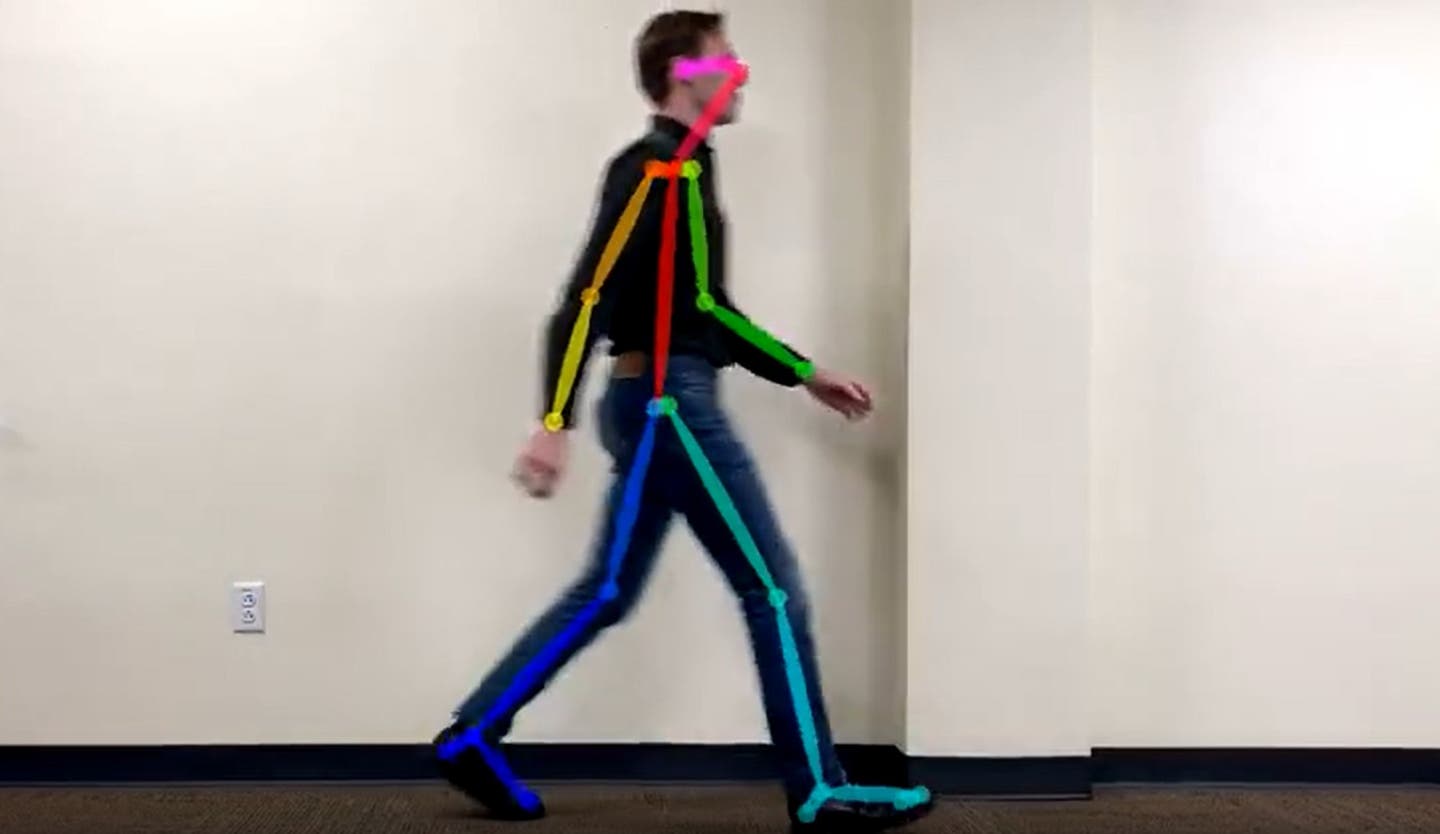Researchers release free mobile software for high-quality walking and gait analysis
Current methods for gait analysis are costly and often inaccessible due to time constraints and the extensive efforts needed for assessments

Current methods for gait analysis are costly and often inaccessible due to time constraints and the extensive efforts required for assessments. Example of Gait Video Tracking. (CREDIT: Kennedy Krieger Institute and Johns Hopkins University)
Researchers at the Kennedy Krieger Institute and Johns Hopkins Medicine have devised a novel method to assess a patient’s walking ability and stance more effectively. Instead of relying on expensive and time-consuming techniques, they found that a simple video captured on a personal device like a smartphone or tablet can provide high-quality gait analysis.
According to experts, current methods for gait analysis are costly and often inaccessible due to time constraints and the extensive efforts required for assessments.
However, there is a significant demand for such analysis, especially among patients with conditions like traumatic brain injury, physical injury, or various disorders. The researchers developed freely available software to facilitate more convenient assessment of walking abilities, thereby enhancing rehabilitation comprehensiveness.
Researchers recorded three-dimensional (3D) motion capture and digital videos of gait trials performed by persons post-stroke and persons with Parkinson’s disease. (CREDIT: PLOS Digital Health)
Dr. Ryan Roemmich, a research scientist at the Kennedy Krieger Institute and assistant professor of physical medicine and rehabilitation at the Johns Hopkins University School of Medicine, highlighted the potential of using smartphones for high-quality gait analysis.
He emphasized the need for better measurement techniques accessible to all clinicians and researchers, citing various conditions that could benefit from this approach.
The assessment involves clinicians recording a cellphone video of the patient’s walking pattern from different perspectives, such as walking toward the camera, away from it, or from a profile angle.
Related Stories
Dr. Roemmich pointed out that the flexibility to record videos anywhere removes limitations associated with testing in clinical settings, allowing for recordings in a patient’s home environment.
The recorded data is then analyzed using algorithms and software developed by the researchers, which track the movement of the patients' knees, ankles, and step length.
The approach also considers the size of the person in the video image. Observations were made while patients walked on the ground and treadmill.
Researchers compared spatiotemporal gait parameters and joint kinematics from our workflows to parameters obtained with 3D motion capture. (CREDIT: PLOS Digital Health)
Dr. Jan Stenum, a research associate at Johns Hopkins University and co-investigator in the research, noted that clinicians would initially require training to effectively use the technology for optimal results. However, the ultimate goal is to empower patients to record videos at home and send them for analysis.
While standardized spaces are preferred for optimal results, Dr. Stenum mentioned the researchers' aim to enable patients and families to record videos themselves using their devices. Dr. Roemmich and Dr. Stenum anticipate that this development will encourage more doctors to explore similar alternatives for gait analysis across the U.S.
“This could propel future research into how these technologies can be used in other forms of rehabilitation,” said Dr. Roemmich. “I look forward to fine-tuning our approach and implementing this method for patients who need it most.”
The study "Clinical gait analysis using video-based pose estimation: Multiple perspectives, clinical populations, and measuring change", is published at PLOS Digital Health.
For more science news stories check out our New Innovations section at The Brighter Side of News.
Note: Materials provided above by The Brighter Side of News. Content may be edited for style and length.
Like these kind of feel good stories? Get the Brighter Side of News' newsletter.



